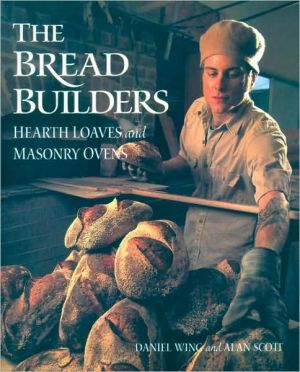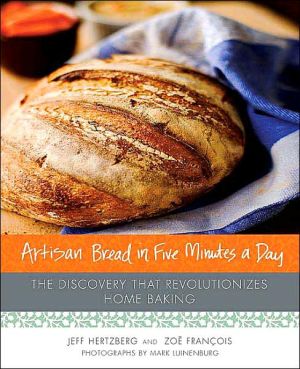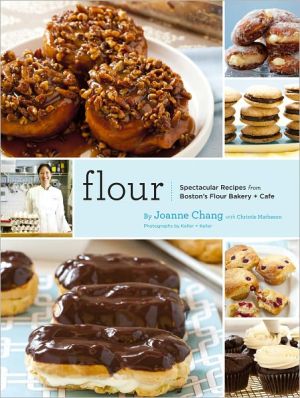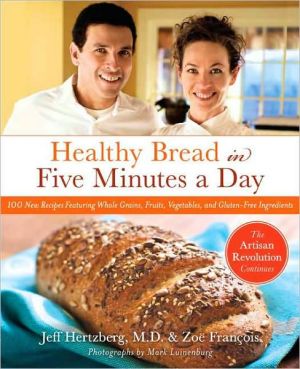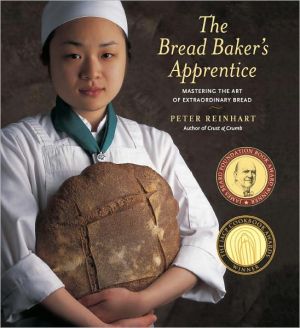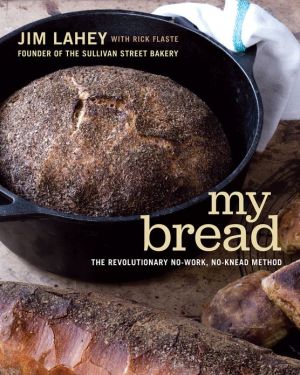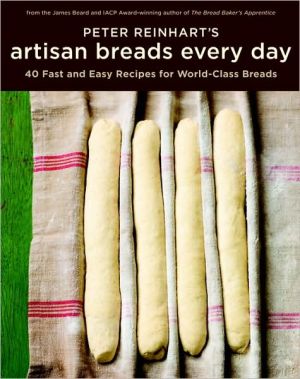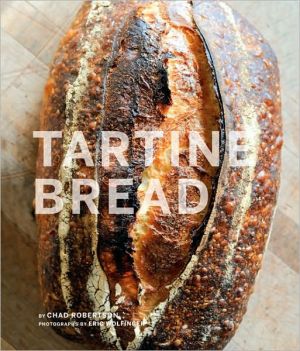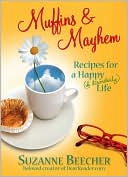Bread Builders: Hearth Loaves and Masonry Ovens
Creating the perfect loaf of bread--a challenge that has captivated bakers for centuries--is now the rage in the hippees places, from Waitsfield, Vermont, to Point Reyes Station, California. Like the new generation of beer drinkers who consciously seek out distinctive craft-brewed beers, many people find that their palates have been reawakened and re-educated by the taste of locally baked, whole-grain breads. Today's village bakers are finding an important new role--linking tradition with a...
Search in google:
You may have noticed the renaissance of good bread. Not just good bread, but excellent bread. Not just excellent bread, but nutritious bread that tastes fantastic. Exploring both the science and the artistry of baking bread, The Bread Builders takes you behind the scenes of this revolution, revealing the keys to making your own great bread from start to finish, from grain to oven. The secrets in a nutshell? Whole grain flour, natural leavens (also known as sourdough), and masonry ovens.Daniel Wing, a lover of all things artisinal, had long enjoyed baking his own sourdough bread. His quest for the perfect loaf began with serious study of the history and chemistry of bread baking, and eventually led to an apprenticeship with Alan Scott, the most influential builder of masonry ovens in America. Along the way, Daniel visited numerous commercial bakers steeped in the traditions of natural leavens, masonry baking, and the archetypal village baker.Alan and Daniel have teamed up to write this thoughtful, entertaining, and authoritative book that shows you how to bake superb healthful bread and build your own masonry oven. The first half of The Bread Builders talks about grains and flours, leavens and doughs, the chemistry of bread, and the physics of baking. The second half provides a step-by-step guide to constructing a masonry oven, in typical Chelsea Green style. The authors also profile more than a dozen small-scale bakers around the U.S. whose practices embody the holistic principles of community-oriented baking based on whole grains and natural leavens.The Bread Builders will appeal to a broad range of readers, including:o Connoisseurs of good bread and good food.o Home bakers interested in taking their bread and pizza to the next level of excellence.o Passionate bakers who fantasize about making a living by starting their own small bakery.o Do-it-yourselfers looking for the next small construction project.o Small-scale commercial bakers seeking inspiration, the most up-to-date knowledge about the entire bread-baking process, and a marketing edge. About The AuthorDaniel Wing and Alan Scott are both seasoned bakers and builders (one an amateur, the other a professional). Dan, a biologist and physician by training, has written for publications as various as Fine Homebuilding and The Archives of Physical Medicine and Rehabilitation. He travels out from his home in Vermont in a gypsy wagon of his own construction, and naturally he built his own bread oven on wheels. Alan Scott is a craftsman and metaphysician who combines a lifetime's experience in metalwork, farming, and masonry oven-building with a constant awareness of the spiritual dimension of our activities on this earth. Originally from Australia, Alan lectures and leads workshops throughout the U.S., under the aegis of his oven building and consultation firm, Ovencrafters, which is based in Petaluma, California.
\ The Right Kind of Flour\ I wish I could just tell you what kind of flour to buy to bake bread, but I can't. Not because I'm in the hip pocket of a flour company, but because I don't know enough about you. I don't know:\ \ \ where you live -- the local all-purpose flour in New England will make good bread but not good biscuits, while the local all-purpose flour in Alabama will make good biscuits but not good bread.\ \ \ what kind of bread you like -- hearth bread, pan bread, white bread, dark bread\ \ \ whether you only eat organic foods\ \ \ whether you have a grain mill\ \ \ whether you will hand-knead your dough\ \ \ whether you use natural leavens (sourdoughs)\ \ I would need to know the answers to these questions, and others, before I could recommend a flour. "Wheat" is many varieties of grain, each lot of grain is different even within one variety, and a miller can make many types of flour from one lot of wheat. This chapter will give you enough of a background about wheat to enable you to ask the questions you need to ask to get the flour you need for the baking you want to do. Let's start at the beginning -- the beginnings of agriculture.\ Oven Considerations\ You will be more familiar with masonry materials after you have read the chapter on materials (chapter 8). If you are going to build your own oven, you need to buy a basic book on masonry construction or get one from the library. It would be wasteful to duplicate all of that information here. After educating yourself you must still make several decisions:\ 1. Do you want a slab and block walls as your foundation (as is presented in this book), or some other arrangement, such as a heavy-duty welded metal stand?\ 2. Are you in a cold climate, where the foundation should be insulated or placed over a rubble footing to prevent frost heaving?\ 3. Do you want an ash slot in the hearth? They are convenient for bread ovens but optional for pizza ovens, where the fire is pushed into the back or side, not raked out.\ 4. What is your comfortable working height? For most people it is a little below elbow level. Remember that this is the height of the finished hearth, not the height of the ash-dump walls or the height of the top of the hearth slab. The traditional height of a European hearth is 90 centimeters -- about 351/2 inches; however, many bakers like a higher hearth. A lower one will not do, unless children will be actively involved with the oven, as at a school.\ 5. Will you use firebrick or red brick for the walls and dome? If you use firebrick for the walls and dome you need 10 percent fewer bricks than the standard plans call for, because firebrick are larger than red brick.\ 6. Will you use Portland cement or alumina-based concrete for the hearth slab and cladding of the oven, and how thick will the cladding be? Use alumina and a thicker cladding if you are going to be baking every day, or if you want to bake more than three loads per firing.\ 7. Do you want thermocouples, and how many? I recommend at least one in the wall or dome, and one in the hearth, but having a series of three of them in line somewhere in the dome is even better.\ 8. What will the facade of the oven look like?\ 9. What type of arch do you want at the opening of the chimney recess, and what type of brick, stone, or tile is to be seen on the facade?\ 10. Do you want a stone slab or bricks for your outer hearth?\ 11. Will you insulate the bottom of the hearth slab to save heat? This will be worthwhile if you plan to use the oven more than once a week, and it adds little expense or labor.\ 12. How will you insulate the dome and walls of the oven?\ 13. If outdoors, what kind of roof and enclosure do you want? If indoors, what kind of outer oven finish do you want? Brick, stucco, stone?\ 14. Will your flue run straight up, or does it need to snake around somewhere to get out of the building?\ As you can see, there are many questions that must be answered -- and this list is by no means complete. Building a masonry oven requires a certain amount of forethought, but remember, the more consideration you devote in the planning stages the more smoothly the construction processes will proceed and the more satisfied you will be with the final outcome.\
\ Contents Acknowledgments vi Preface ix Introduction Looking for Real Bread, Finding Masonry Ovens xiii Chapter One Naturally Fermented Hearth Bread 1\ Visit: Upland Bakers, Marshfield, Vermont 18\ Chapter Two Bread Grains and Flours 23\ Visit: Giusto's Specialty Foods, South San Francisco, California 41\ Chapter Three Leavens and Doughs 43\ Visit: Sands, Taylor, and Wood (King Arthur Flour), Norwich, Vermont 69\ Chapter Four Dough Development 72\ Visit: Acme Baking Company, Berkeley, California 89\ Chapter Five Baking, Ovens, and Bread 93\ Visit: Consulting and Marketing Services, South San Francisco, California 108\ Chapter Six Masonry Ovens of Europe and America 113\ Visits: American Flatbread, Warren, Vermont 123\ The Cheese Board, Berkeley, California 127\ Chapter Seven Preparing to Build a Masonry Oven 129\ Visits: Mugnaini Imports, Watsonville, California 149\ San Juan Bakery, San Juan Bautista, California, and Home Fires Bakery, Leavenworth, Washington 153\ Chapter Eight Masonry Materials, Tools, and Methods 157\ Visit: Cafe Beaujolais, Mendocino, California 169\ Chapter Nine Oven Construction 173\ Visit: Depot Town Sourdough Bakery, Ypsilanti, Michigan 193\ Chapter Ten Oven Management 195\ Visits: Della Fatoria, Petaluma, California 210\ Rani and Keith, Garberville, California 213\ Chapter Eleven A Day in the Life at the Bay Village Bakery 216\ Bakers' Resource: Sourdough Microbiology 227\ Recommended Sources 233\ Glossary 236\ Bibliography 243\ Index 246
